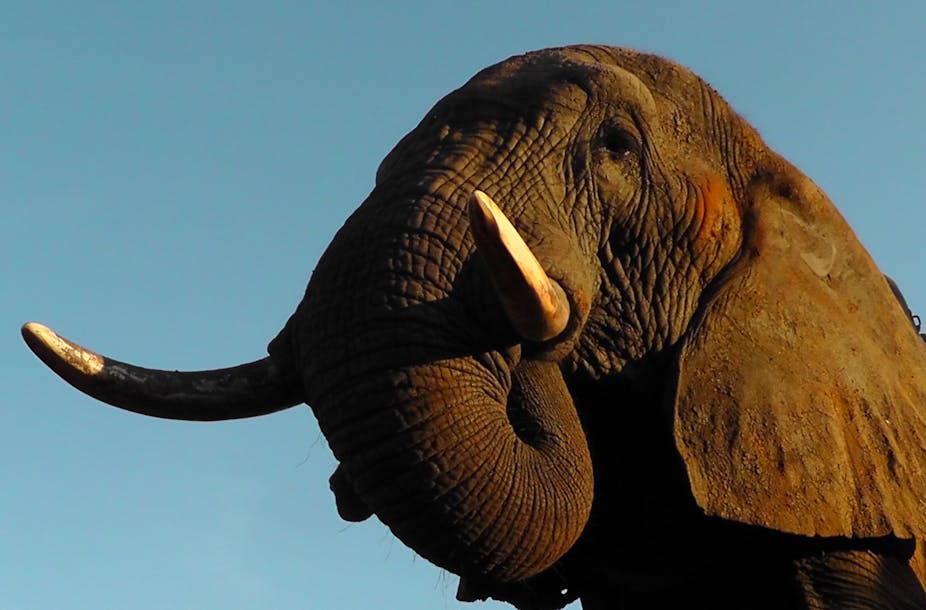As humans, we point all the time. It’s an action we do almost without thinking: even one-year-old infants use pointing and understand what pointing means when an adult does it for them. It’s a really simple, direct way of showing someone else what we want them to see. It lets us say “over there” even without using language.
Since it seems to come so naturally to us, it’s been surprising to find that pointing isn’t really used in the rest of the animal kingdom. A simple task has been widely used to test animals’ ability to follow pointing, where a human experimenter hides a piece of food inside one of two identical containers. Then after the experimenter points to where the food is hidden the animal picks one of the containers. Even our closest animal relatives, the great apes, don’t readily follow pointing in this task. They simply don’t seem to understand that when humans point for them, they are trying to communicate with them in a helpful way. The only animals that show much ability at following human pointing are domestic ones, which have had thousands of years to adapt to work with humans, particularly the domestic dog.
In a paper published in Current Biology this week, Richard Byrne and I report the results of an experiment which demonstrates that African elephants spontaneously follow human pointing without having to learn how. This shows a striking similarity between human and elephant cognition.
The elephants in the study were 11 captive African elephants in Victoria Falls, where their day job was taking tourists on elephant-back rides. We used the same method as has been used with other animals, but scaled up for elephants: after hiding a piece of fruit in one of two buckets I pointed to where the food was and recorded the first bucket that it put its trunk into. The majority of elephants got it right from the very first trial, and didn’t show signs of learning across the experiment.
The elephants in our study were specifically trained to respond to vocal commands only, but not to respond to gestures. The fact that elephants comprehend a very human way of communicating can explain why they have been used by humans so successfully for thousands of years. Elephants have never been domesticated - they are wild animals that for some reason can be trained to work extremely well with humans. This suggests the ancestor of today’s domestic animals may have already had some human-like abilities, in contrast to the theory that domestication is needed to give animals human-like cognitive abilities so that they can work for us.
We think elephants understand pointing because it has relevance in elephant behaviour in the wild. Perhaps in time it will be shown that elephants point for each other, possibly with their trunks. Elephants do make very prominent trunk gestures - for example, when one detects the scent of a predator it raises its trunk in an s-shape. In addition to purely enhancing scent detection such a gesture could potentially also function as a point signifying to any other elephants that there is something interesting in the direction of the extended trunk. But we don’t know yet whether this is the case, after all they may be doing nothing more than trying to get a better sniff at what’s around them.

Elephants are only very distantly related to us, they form part of an ancient African group of animals including the hyrax and aardvark. They are so unrelated to us that we can assume that elephants’ ability to follow pointing evolved separately from our own, because of similarities in our environments.
What elephants have in common with humans is that they live in complex social networks where help and support for others are essential for survival. Field reports abound with descriptions of elephants doing things that look suspiciously like empathy: returning lost calves, helping elephants that have got stuck in mud, and removing embedded spears and veterinary darts. Not to mention that elephants are the only other species known to have more than a passing interest in their dead: they show intense fascination for dead elephants even when there are only bones remaining.
It may be only in such a society that the ability to follow pointing has adaptive value, and this can explain why the great apes don’t follow human pointing readily. Group-living primates constantly compete for food and for mates. In fact they are better at understanding signals in a competitive context than in the context of cooperation, such as pointing to food. Understanding the context of the gesture may be as important as the gesture itself. While this trips up great apes on the pointing task, elephants, used to living cooperatively, instinctively understand.

